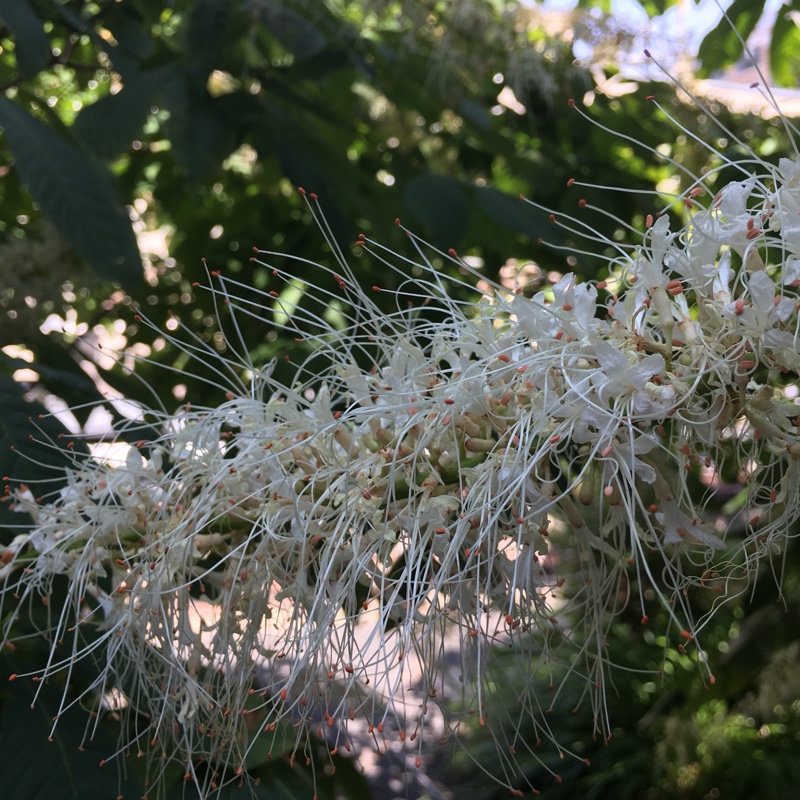
Aesculus parviflora
Bottlebrush buckeye
The dwarf Horse Chestnut is a spreading shrub growing up to 2.5 metres high and forming thickets from suckering. Like all chestnuts, it has attractive autumn colour. It produces spidery flowers with protruding stamens in panicles to 30cm tall followed by smooth-skinned fruit. Prefers slightly acidic-neutral soil. (pH 6-7). Preferred location: semi-shade.
Contributed by @mr_plantgeek
-
Partial shade
-
Occasional watering
-
Full Frost Hardy: 5F (-15°C)
-
All soil conditions
Common name
Bottlebrush buckeye
Latin name
Aesculus parviflora
type
Deciduous trees or shrubs
family
Sapindaceae
ph
6.0 - 7.0 Acid - Neutral
Plant & bloom calendar
-
Best time to plant
full grown dimensions
 3.00 M
2.50 M
3.00 M
2.50 M
Aesculus parviflora
The dwarf Horse Chestnut is a spreading shrub growing up to 2.5 metres high and forming thickets from suckering. Like all chestnuts, it has attractive autumn colour. It produces spidery flowers with protruding stamens in panicles to 30cm tall followed by smooth-skinned fruit. Prefers slightly acidic-neutral soil. (pH 6-7). Preferred location: semi-shade.
Planting season
From Early Autumn TO Mid Autumn
Young trees should be planted in their permanent position as soon as is practical. If they are large enough, at the end of their first growing season and certainly at the end of the second. Do not allow them to be grown in too shallow a container for any length of time. To plant, dig a hole about three times the width of the root ball and deep enough so that the top of the rootball is flush with the soil. Once the tree is placed in the hole, ensure it is straight before adding some of the soil to anchor it in place. Fill the hole with water, allowing it to absorb before adding organic matter and remaining soil. Tamp down lightly to eliminate any air pockets and add a layer of mulch to help retain moisture and keep out weeds.











